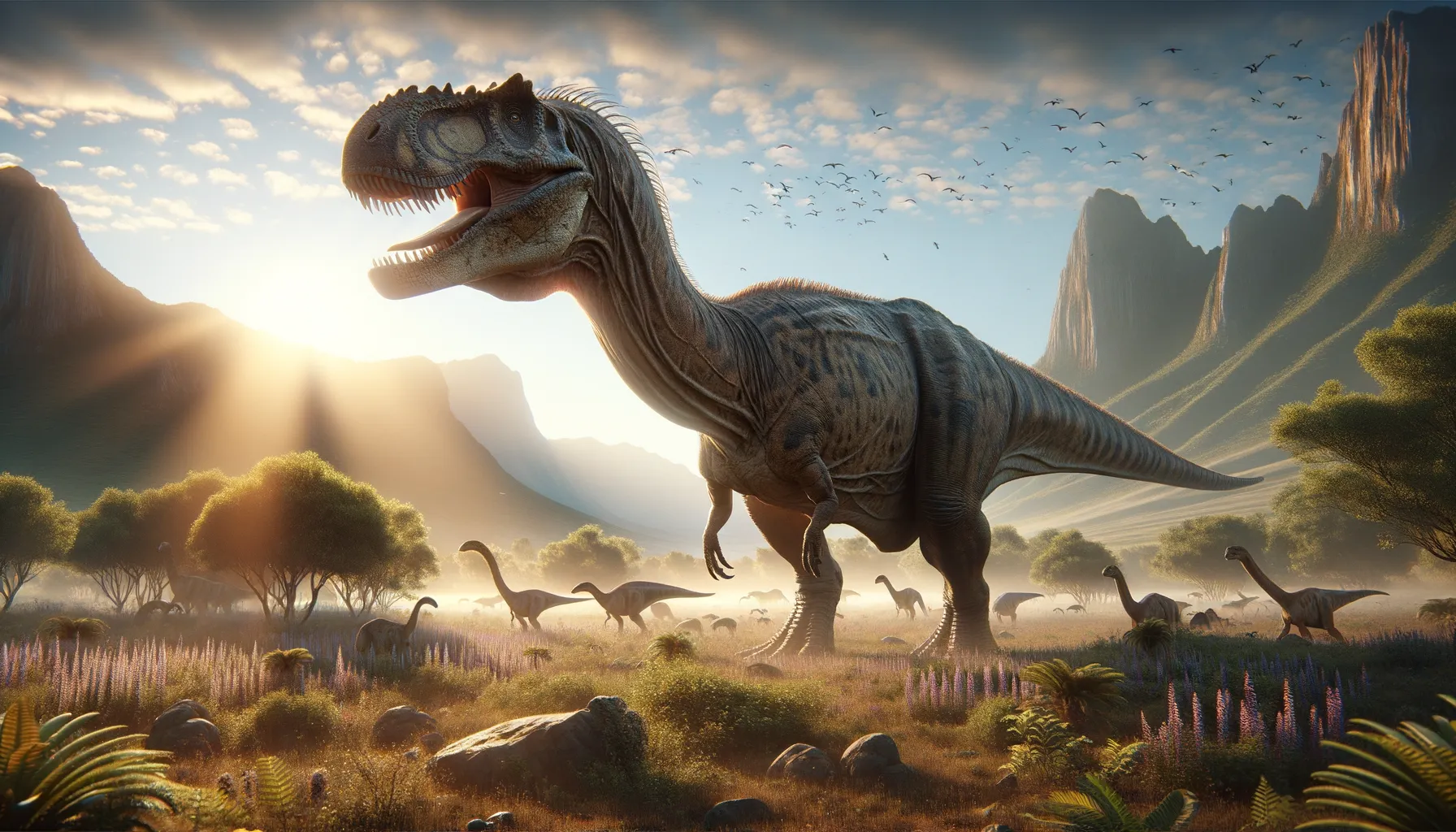
Opisthocoelicaudia
Giant of the Mongolian wastelands!
Period
Cretaceous
Length
Reaching up to 39 feet in length.
Height
Around 13 feet tall at the shoulder.
Weight
Approximately 20 tons.
Opisthocoelicaudia was a large, plant-eating dinosaur known for its hefty size and long neck. Living in the Late Cretaceous period, it roamed what is now Mongolia. Its fossils, found in 1965, provided insights into sauropod anatomy and locomotion. The impressive creature likely moved in herds, grazing on vegetation. Its anatomical features indicate adaptations for supporting its huge, weighty body.
Diet
Opisthocoelicaudia was a herbivore, feeding primarily on a variety of plants. It likely consumed leaves and low-lying vegetation, using its long neck to reach its food.
Hunting
As a plant-eater, it did not hunt but rather focused on foraging and grazing. It may have occasionally shifted feeding grounds, depending on plant availability.
Environmental challenges
Living in a period of diverse ecosystems, it might have faced challenges in finding enough food during dry seasons. Sudden climate shifts could have impacted plant growth, forcing migrations. Water scarcity might have also been an issue, especially in drier times.
Speed
Slow-moving due to its massive size.
Lifespan
Estimated to be several decades.
First discovery
Discovered in Mongolia in 1965.
Fun Facts
- Opisthocoelicaudia lived during the Late Cretaceous period, around 70 million years ago.
- This dinosaur's name means 'backward-facing tail,' referring to its unique vertebrae structure.
- It was a gigantic herbivore, likely feeding on a wide variety of plants to sustain its massive body.
- Fossils of Opisthocoelicaudia were first discovered in Mongolia in 1965.
- Unlike many other sauropods, Opisthocoelicaudia had a relatively short neck.
- Its heavily built limbs suggest it had a strong and robust build, possibly aiding in supporting its large body.
- Opisthocoelicaudia is known for its large and distinctive tail, which may have been used for balance or defense.
Growth and Development
Young Opisthocoelicaudia likely grew rapidly to avoid predation. Growth rates would have decreased as they reached maturity, with adults developing robust features. Their long necks and tails provided balance and defense.
Habitat
They inhabited plains and forested areas, rich in vegetation. These environments supported their massive dietary needs. Seasonal changes might have dictated migration patterns within these habitats.
Interaction with other species
Opisthocoelicaudia probably interacted with other herbivores, competing for food. Predators like theropods might have posed threats, especially to young ones. Symbiotic relationships with other species could have existed, aiding in plant pollination and seed dispersal.
Natural lifespan
Their natural lifespan remains uncertain but could span several decades.
Reproduction
Reproduction likely involved laying eggs in nests, similar to other sauropods. Clutches were probably large, ensuring some offspring survived predation. Parental care might have been limited, as young ones were left to fend for themselves.
Social behaviour
It likely moved in herds, which provided protection against predators. Social structures might have included dominant leaders guiding group movements. Communication could have been visual and auditory, to maintain group cohesion.
Fossil locations
Fossils have been primarily found in Mongolia, particularly the Gobi Desert. These discoveries have provided a deep understanding of Late Cretaceous ecosystems. The well-preserved remains indicate a once-thriving population in the region.
